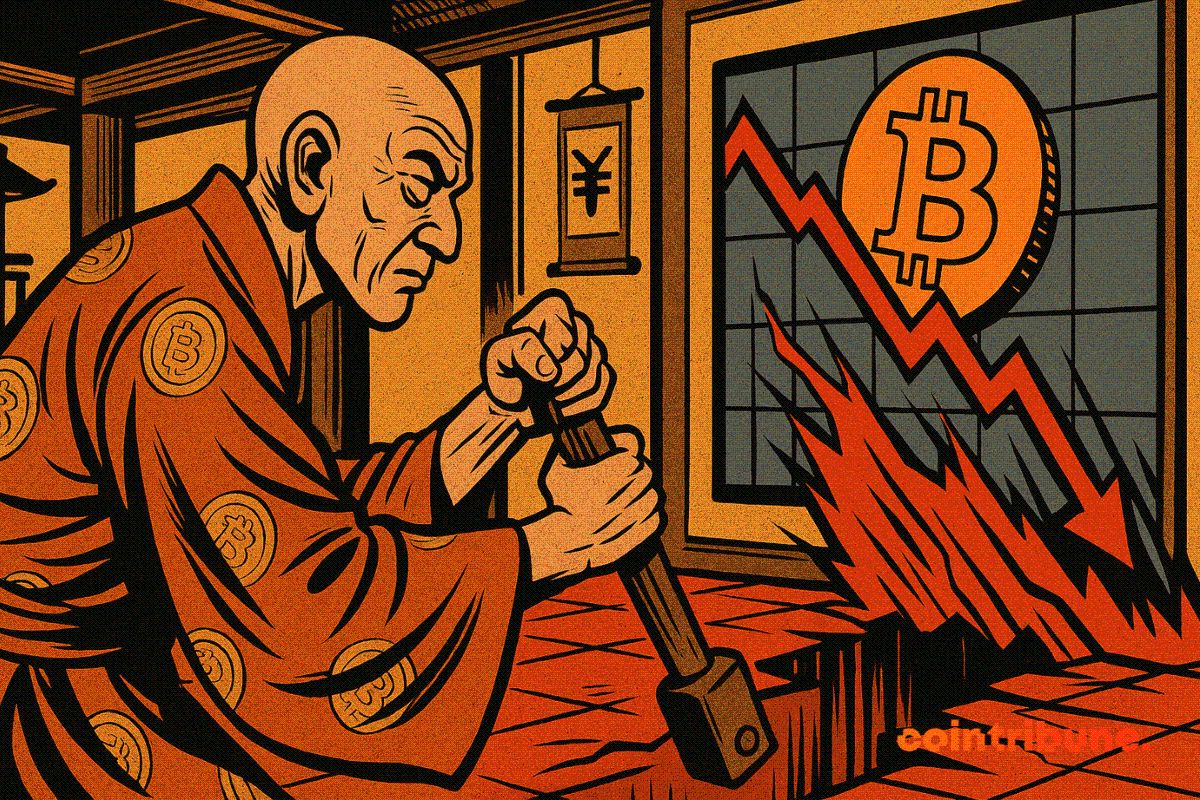For many, the world of computer science has long been synonymous with boundless opportunity, innovation, and lucrative careers. In the dynamic realm of cryptocurrency and blockchain, this belief is amplified, as cutting-edge technology drives rapid advancements. However, a stark reality is now casting a long shadow over this once-bright future, particularly for those just stepping out of university. The promise of high-paying computer science jobs straight out of college seems to have evaporated, leaving a generation of graduates grappling with unexpected unemployment and disillusionment. This seismic shift raises critical questions about the future of tech careers and the pervasive AI impact on the workforce.
The Unraveling of the Computer Science Dream: A Grim Reality
The narrative of computer science as an automatic pathway to prosperity has officially collapsed. What was once considered a bulletproof career choice, promising six-figure starting salaries and endless opportunities, has transformed into a challenging landscape. Recent data from a Federal Reserve Bank of New York study paints a sobering picture: fresh computer science graduates are facing unemployment rates ranging from 6.1% to 7.5%. To put this into perspective, these figures are more than double the unemployment rates experienced by graduates in fields traditionally perceived as less lucrative, such as biology and art history majors.
This stark contrast highlights a significant paradigm shift. The once-unquestioned demand for software developers and tech talent, fueled by years of rapid digital expansion, has hit a major roadblock. The dream, once vibrant with innovation and growth, has undeniably become a nightmare for many aspiring professionals entering the tech job market. This situation isn’t just a statistical anomaly; it’s a profound challenge impacting real lives and forcing a reevaluation of career paths that were previously considered ironclad.
Navigating the Tech Job Market: Individual Stories of Struggle
The statistics, while alarming, truly come to life through the individual stories of graduates caught in this unexpected downturn. A recent New York Times piece vividly illustrates the harsh realities on the ground, revealing experiences that border on the surreal. Consider the plight of Manasi Mishra, a 21-year-old Purdue University graduate. She entered her degree program with the promise of high-paying entry-level roles, only to receive a single interview post-graduation—at Chipotle. Adding to the dismay, she didn’t even secure that position. Her story is a poignant example of the disconnect between pre-graduation expectations and post-graduation reality.
Equally compelling is the experience of Zach Taylor, who graduated from Oregon State in 2023. Since then, he has applied to an astonishing nearly 6,000 tech jobs. Despite this relentless effort, he managed to land just 13 interviews and received zero offers. The depth of his struggle is underscored by his rejection from McDonald’s, citing a ‘lack of experience.’ These personal narratives are not isolated incidents; they represent a growing trend of intense competition and seemingly insurmountable barriers for new graduates seeking entry into the software engineering field.
These stories highlight:
- Misaligned Expectations: Graduates were promised a booming market, but found a bottleneck.
- Overwhelming Competition: Thousands of applicants vying for limited positions.
- Entry-Level Paradox: The struggle to gain ‘experience’ when no one will hire you without it.
Understanding the AI Impact: Culprits Behind the Crisis
What exactly is fueling this dramatic shift in the tech job market? Several powerful forces are converging to create this challenging environment for new graduates. The most frequently cited culprits are the rapid advancements in AI programming tools and the significant job cuts enacted by major tech companies.
1. The Rise of AI Programming Tools: Artificial intelligence is no longer just a futuristic concept; it’s actively transforming how software is developed. Tools powered by AI can now automate many tasks traditionally performed by junior developers, such as:
- Code Generation: AI can write boilerplate code, functions, and even entire modules based on simple prompts.
- Automated Testing: AI-driven tools can create and execute test cases, identify bugs, and suggest fixes.
- Debugging and Optimization: AI can analyze code for inefficiencies and errors, speeding up development cycles.
This automation means that companies require fewer entry-level personnel for routine coding tasks. The demand is shifting towards more experienced engineers who can manage AI tools, design complex systems, and solve problems that AI cannot yet handle autonomously. This fundamental change is reshaping the very nature of software engineering roles.
2. Big Tech Layoffs: Concurrent with AI’s rise, the tech industry has undergone a period of significant restructuring. Giants like Amazon, Meta, and Microsoft, which had aggressively hired during the pandemic-driven digital boom, began slashing jobs en masse. These layoffs, often impacting thousands of employees, flooded the market with experienced talent, further intensifying competition for the remaining positions. While many of these layoffs targeted mid-to-senior roles, the ripple effect reduced overall hiring capacity and increased the pool of applicants for all levels, including entry-level. This created an even more formidable barrier for new graduates with limited professional experience.
3. The ‘AI Doom Loop’: A particularly insidious aspect of this crisis is what students have dubbed the ‘AI doom loop.’ This refers to a vicious cycle where job seekers use AI tools to mass-apply to hundreds or even thousands of positions, hoping to increase their chances. However, companies, overwhelmed by the sheer volume of applications, are increasingly employing AI-powered applicant tracking systems (ATS) to filter and auto-reject candidates, sometimes within minutes of submission. This creates a scenario where AI is used by both sides, often leading to automated rejections for human applicants, perpetuating a cycle of frustration and despair. The result is that many promising candidates are being screened out before a human ever sees their resume, making the job hunt feel like an unwinnable game against algorithms.
Beyond the Crisis: Adapting to a New Era of Software Engineering
While the current outlook for computer science jobs might seem bleak, it’s crucial to remember that the tech industry is constantly evolving. This period of disruption, while painful, also presents an opportunity for adaptation and innovation. Graduates and aspiring professionals must pivot their strategies to thrive in this new landscape.
Here are key areas for adaptation:
- Specialized Skills and Niche Expertise: Instead of broad knowledge, focus on niche areas where human creativity and critical thinking remain paramount. This includes fields like AI ethics, prompt engineering, cybersecurity, quantum computing, or complex system architecture.
- Interdisciplinary Knowledge: Combining computer science with another field, such as biology, finance, or even creative arts, can open unique career paths that require a blend of skills AI cannot easily replicate.
- Soft Skills and Problem-Solving: Communication, collaboration, critical thinking, adaptability, and emotional intelligence are increasingly valuable. These ‘human’ skills are essential for navigating complex projects and interacting with diverse teams.
- Building a Strong Portfolio: Personal projects, open-source contributions, and real-world problem-solving demonstrations are more critical than ever. A robust portfolio can speak louder than a degree alone, showcasing practical abilities and passion.
- Networking and Personal Branding: In a world of automated rejections, human connections matter immensely. Attending industry events, engaging on professional platforms, and even leveraging social media (like Manasi Mishra’s savvy TikTok posts that helped her land a job) can provide crucial breakthroughs.
- Lifelong Learning: The pace of technological change demands continuous learning. Graduates must commit to constantly updating their skills, learning new programming languages, frameworks, and understanding emerging technologies.
The future of software engineering is not about rote coding, but about leveraging AI as a tool, understanding its limitations, and focusing on higher-order problem-solving and innovation.
The Broader Implications: Addressing Graduate Unemployment
The rising graduate unemployment in a field as critical as computer science has far-reaching implications beyond individual hardship. It poses a significant challenge to the innovation pipeline, economic growth, and societal well-being. If the brightest minds are struggling to find work in the sector they trained for, it could deter future talent, stifle entrepreneurial ventures, and slow down technological progress. This isn’t just a tech problem; it’s an economic and social one.
Addressing this crisis requires a multi-faceted approach involving academia, industry, and government:
- Curriculum Reform: Universities must rapidly adapt their curricula to reflect the changing demands of the industry, emphasizing AI literacy, specialized skills, and soft skills.
- Industry Collaboration: Companies need to collaborate more closely with educational institutions to provide internships, mentorships, and clearer pathways for entry-level talent.
- Policy Support: Governments might need to explore initiatives that support workforce retraining, incentivize companies to invest in human talent alongside AI, and foster new sectors that absorb displaced tech workers.
The current state of the tech job market serves as a powerful reminder that no industry is immune to disruption. While the initial shock is profound, the capacity for human adaptation and innovation remains. The challenge now is to transform this nightmare into an opportunity for growth, learning, and the creation of a more resilient and dynamic tech workforce.
To learn more about the latest AI market trends, explore our article on key developments shaping AI features and institutional adoption.




